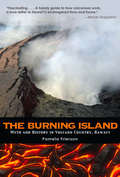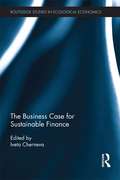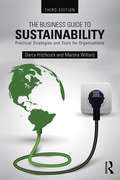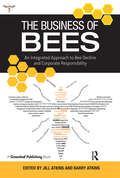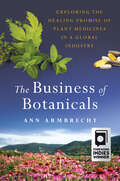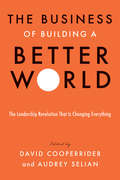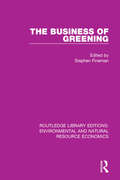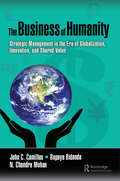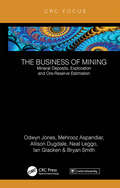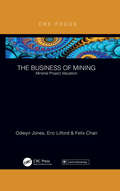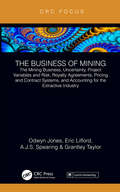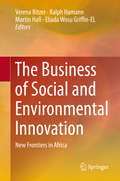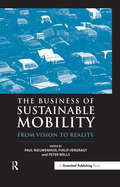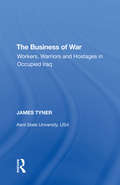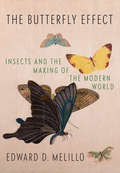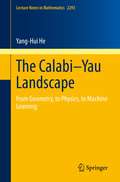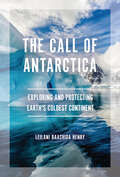- Table View
- List View
The Burning Island
by Pamela FriersonWesterners-from early missionaries to explorers to present-day artists, scientists, and tourists-have always found volcanoes fascinating and disturbing. Native Hawaiians, in contrast, revere volcanoes as a source of spiritual energy and see the volcano goddess Pele as part of the natural cycle of a continuously procreative cosmos. Volcanoes hold a special place in our curiosity about nature.The Burning Island is an intimate, multilayered portrait of the Hawaiian volcano region-a land marked by a precarious tension between the harsh reality of constant geologic change, respect for mythological traditions, and the pressures of economic exploitation. Pamela Frierson treks up Mauna Loa, the world's largest active volcano, and Kilauea to explore how volcanoes work, as well as how their powerful and destructive forces reshape land, cultures, and history. Her adventures reveal surprising archeological ruins, threatened rainforest ecosystems, and questionable real estate development of the islands. Now a classic of nature writing, Frierson's narrative sets the stage for a larger exploration of our need to take great care in respecting and preserving nature and tradition while balancing our ever-expanding sense of discovery and use of the land.
The Burning Island
by Pamela FriersonWesterners-from early missionaries to explorers to present-day artists, scientists, and tourists-have always found volcanoes fascinating and disturbing. Native Hawaiians, in contrast, revere volcanoes as a source of spiritual energy and see the volcano goddess Pele as part of the natural cycle of a continuously procreative cosmos. Volcanoes hold a special place in our curiosity about nature.The Burning Island is an intimate, multilayered portrait of the Hawaiian volcano region-a land marked by a precarious tension between the harsh reality of constant geologic change, respect for mythological traditions, and the pressures of economic exploitation. Pamela Frierson treks up Mauna Loa, the world's largest active volcano, and Kilauea to explore how volcanoes work, as well as how their powerful and destructive forces reshape land, cultures, and history. Her adventures reveal surprising archeological ruins, threatened rainforest ecosystems, and questionable real estate development of the islands. Now a classic of nature writing, Frierson's narrative sets the stage for a larger exploration of our need to take great care in respecting and preserving nature and tradition while balancing our ever-expanding sense of discovery and use of the land.
The Burning Question
by Bill Mckibben Duncan Clark Mike Berners-LeeThe Burning Question reveals climate change to be the most fascinating scientific, political and social puzzle in history. It shows that carbon emissions are still accelerating upwards, following an exponential curve that goes back centuries. One reason is that saving energy is like squeezing a balloon: reductions in one place lead to increases elsewhere. Another reason is that clean energy sources don't in themselves slow the rate of fossil fuel extraction.Tackling global warming will mean persuading the world to abandon oil, coal and gas reserves worth many trillions of dollars - at least until we have the means to put carbon back in the ground. The burning question is whether that can be done. What mix of politics, psychology, economics and technology might be required? Are the energy companies massively overvalued, and how will carbon-cuts affect the global economy? Will we wake up to the threat in time? And who can do what to make it all happen?
The Business Case for Sustainable Finance (Routledge Studies In Ecological Economics Ser. #25)
by Iveta ChernevaIn the world of finance, environmental, social and governance (ESG) factors have until recently really only impinged upon the ‘soft’ domains of public relations, philanthropy and corporate social responsibility. The existing literature focuses on issues including how finance can contribute to environmental governance, the need for investment to mitigate climate change and how financial institutions should act in a responsible way when conducting their operations. However, very little literature focuses solely on why exactly, and under what circumstances, ESG factors influence the profitability of investment, insurance and lending activities and a systematic, rigorous business case for ESG finance analysis is largely missing. The aim of this book is to tackle and answer the question: ‘when and why is it profitable to incorporate environmental, social and governance factors into financial operations?’ and brings together fifteen original chapters written exclusively by leading finance executives, practitioners and scholars.
The Business Guide to Sustainability: Practical Strategies and Tools for Organizations
by Marsha Willard Darcy HitchcockThe Business Guide to Sustainability is a practical introduction to implementing a comprehensive sustainability strategy in any organization. Written by top business consultants, this useful book can be applied in both large and small enterprises. This edition shifts away from a discussion of CSR to focus more squarely on sustainability. It explores strategies for implementing sustainability in each of the functional areas of the corporation (accounting, HR, operations, etc.), while providing examples from a range of sectors, including manufacturing, services, and government. The book also includes the authors’ S-CORE assessment tool to help organizations determine whether they are on the right track, identify new opportunities, and assign accountability and responsibility. Brimming with interesting stories and examples, and covering new developments such as the emergence of BRICs and the effects of the Great Recession, this book will interest managers, business owners, and students for whom sustainability is a priority.
The Business of Bees: An Integrated Approach to Bee Decline and Corporate Responsibility
by Jill Atkins Barry AtkinsOur bee populations are under threat. Over the past 60 years, they have lost much of their natural habitat and are under assault from pesticides and intensive farming. We rely on bees and other insects to pollinate our fruit and vegetables and, without them, our environment and economy will be in crisis.The Business of Bees provides the first integrated account of diminishing bee populations, as well as other pollinators, from an interdisciplinary perspective. It explores the role of corporate responsibility and governance as they relate to this critical issue and examines what the impact will be on consumers, companies, stock markets and ultimately on global society if bee populations continue to decline at a dangerous rate.The book considers the issue of global bee population decline from a variety of disciplines, combining the perspectives of academics in accounting, science and humanities with those of practitioners in the finance industry. The chapters explore the impact of the rapid decline in pollinator populations on the natural world, on corporations, on the stock market and on accounting. The Business of Bees will be essential reading for those in academia, business and finance sectors and anyone invested in the future of our planet.
The Business of Botanicals: Exploring the Healing Promise of Plant Medicines in a Global Industry
by Ann ArmbrechtFrom tulsi to turmeric, echinacea to elderberry, medicinal herbs are big business—but do they deliver on their healing promise—to those who consume them, those who provide them, and the natural world?&“An eye-opener. . . . [Armbrecht] challenges ideas of what medicine can be, and how business practices can corrupt, and expand, our notions of plant-based healing.&”—The Boston Globe&“So deeply honest, sincere, heartful, questioning, and brilliant. . . . [The Business of Botanicals] is an amazing book, that plunges in, and takes a deepening look at those places where people don&’t often venture.&”—Rosemary Gladstar, author of Rosemary Gladstar&’s Medicinal Herbs&“For those who loved Braiding Sweetgrass, this book is a perfect opportunity to go deeper into understanding the complex and co-evolutionary journey of plants and people.&” —Angela McElwee, former president and CEO of Gaia HerbsUsing herbal medicines to heal the body is an ancient practice, but in the twenty-first century, it is also a worldwide industry. Yet most consumers know very little about where those herbs come from and how they are processed into the many products that fill store shelves. In The Business of Botanicals, author Ann Armbrecht follows their journey from seed to shelf, revealing the inner workings of a complicated industry, and raises questions about the ethical and ecological issues of mass production of medicines derived from these healing plants, many of which are imperiled in the wild. This is the first book to explore the interconnected web of the global herb industry and its many stakeholders, and is an invaluable resource for conscious consumers who want to better understand the social and environmental impacts of the products they buy.&“Armbrecht masterfully manages the challenges and complexity of her source material . . . [She] is a spirited storyteller . . . [and] presents all this with the skill of an anthropologist and the heart of an herbalist.&”—Journal of the American Herbalists Guild
The Business of Building a Better World: The Leadership Revolution That Is Changing Everything
by David Cooperrider Audrey SelianTwenty-nine leading scholars and executives provide a visionary look at the future of business, propelling past damaging industrial-age values to uncover the key ingredients of humanistic, ecologically sustainable, and intergenerational prosperity.Through the exploration of robust cases and stories packed with deep insight and vital science, this extraordinary collection explores how we can adapt our notions of value, markets, and models of cooperation and collective action to create a world where economies and businesses excel, all people thrive, and nature flourishes.In part I, The Business of Business Is Betterment, the contributors show how enterprises today are further developing-and even taking a quantum leap beyond-the multistakeholder logic of shared value creation. Part II, Net Positive = Innovation's New Frontier, is focused on what companies can and are doing to move away from doing no harm to playing an active role in solving environmental, social, and economic problems. The final section, Ultimate Advantage: A Leadership Revolution That Is Changing Everything, looks at new leadership paradigms-characterized by unexpected qualities like virtue, love, compassion, and connection-that are crucial to creating engaged, empowered, innovative, and out-performing enterprises. This book is designed to galvanize change and unite a global community of inquiry and action. It establishes the conceptual cornerstones for a new kind of business practice that will lead the way to an equitable, sustainable, and flourishing future.
The Business of Climate Change: Corporate Responses to Kyoto
by David Levy Kathryn Begg FRANS VAN DER WOERDIn recent years climate change has become a leading issue on both the business and political agenda. With the Kyoto Protocol to the UN Framework Convention on Climate Change now ratified, business is bracing itself for the reality of serious regulation on the reduction of greenhouse gas emissions.The Business of Climate Change presents a state-of-the-art analysis of corporate responses to the climate change issue. The book describes and assesses a number of recent business approaches that will help to identify effective strategies and promote the dissemination of proactive corporate practices on climate change worldwide. By identifying the factors that cause companies to pursue low-carbon strategies and support the Kyoto process, the book will also be helpful to governments in formulating policy.Business and industry have a crucial role to play in the implementation of the Kyoto Protocol. They are major emitters of greenhouse gases, and pressure is mounting for them to engage in a range of mitigation strategies, from emission inventorying and trading schemes to investments in low-carbon technologies. Behind the scenes a number of companies have started to develop strategies to curtail greenhouse gas emissions.These strategies can be very diverse in nature. At a political level, companies try to influence policy implementation and, more specifically, to test ideas in anticipation of possible regulation on the climate change issue. At a more practical level, there are a burgeoning number of initiatives to conserve energy use in production, transportation and buildings, to develop renewable sources of energy, to measure carbon emissions and sequestration at a detailed level, and to develop various markets for trading carbon credits among companies and countries. Some technologies, such as hybrid cars and compact fluorescent lighting, are now market realities.Common to all of these initiatives is that they operate in an environment of high complexity and uncertainty. The political implementation of the Kyoto Protocol remains uncertain and many details remain unspecified. Economic instruments such as emission trading are favoured, but their mechanisms are still hotly debated and the future price of credits is unknown. New markets for low-emission products and technologies are beginning to appear, but there are currently few regulatory drivers to assist their development. The impact of potential regulation on business will vary tremendously between companies and sectors. The fossil fuel and energy sectors fear the economics of action, while sectors such as insurance and agriculture fear the economics of inaction. Combined with the remaining uncertainties about what form climate change may take, corporate responses to reduce risks have to differentiate between sectors and have to be flexible. For individual companies, these big uncertainties demand new thinking and contingency planning.The Business of Climate Change is split into four sections: "Introduction and overview" presents a broad perspective on business and climate policies
The Business of Greening (Routledge Library Editions: Environmental and Natural Resource Economics)
by Stephen FinemanThe Business of Greening, first published in 2000, debates the relationship between business and greening, and the future form this relationship could take. The book gives voice to industrial actors - employees, employers, managers, technical specialists, regulators - in the context of their organizations, within industrial sectors or as part of wider institution regimes. The business of greening is taken as socially constructed, shaped through tensions and competing interests. It produces outcomes that are sometimes unexpected, sometimes hopeful. These outcomes are explored by examining a range of workers, including estate agents, bankers, bakers, printers, regulators, in small and large corporations. Contributors write from a wide range of different social sciences including sociology, geography, organizational science and psychology. This title will be of particular interest to students and researchers of environmental and business studies, and to those who shape environmental policy in government and industry.
The Business of Humanity: Strategic Management in the Era of Globalization, Innovation, and Shared Value
by John Camillus Bopaya Bidanda N. Chandra MohanCompanies across the world, for a variety of reasons, are committing to incorporating social responsibility into their business models and finding that their profits are growing and their long-term sustainability is enhanced—building "humanity" into their business models as the driver of economic, environmental, and social sustainability. This fascinating development is a widely observable global phenomenon. The "Business of Humanity®" (BoH) Proposition is the synthesis of counter-intuitive but simple and powerful ideas about how companies can add value in today’s globalized and fast-changing world. The task of BoH Strategies is to overcome three critical challenges characterizing today’s business environment, namely disruptive technologies, conflicted stakeholders, and unknowable futures. BoH Strategies are designed to convert these challenges into opportunities for enhanced sustainability on all three dimensions—economic, environmental and social. Written by leading experts with decades of experience, this book: Provides a hands-on understanding of how to implement this powerful and rewarding approach to simultaneously add economic value and enhance social benefit Includes the experiences and approaches of highly regarded business executives and successful organizations Responds to the critical challenges created by three environmental mega forces – the inevitability of globalization, the imperative of innovation, and the importance of shared value. This book is based on lessons drawn from the real world and provides a compelling rationale for the power of the BoH Proposition. The pragmatic framework and process offered enable companies to develop and confidently implement value-adding strategies based on the BoH Proposition.
The Business of Less: The Role of Companies and Households on a Planet in Peril
by Roland GeyerThe Business of Less rewrites the book on business and the environment. For the last thirty years, corporate sustainability was synonymous with the pursuit of ‘eco-efficiency’ and ‘win-win’ opportunities. The notion of ‘eco-efficiency’ gives us the illusion that we can achieve environmental sustainability without having to question the pursuit of never-ending economic growth. The ‘win-win’ paradigm is meant to assure us that companies can be protectors of the environment whilst also being profit maximizers. It is abundantly clear that the state of the natural environment has further degraded instead of improved. This book introduces a new paradigm designed to finally reconcile business and the environment. It is called ‘net green’, which means that in these times of ecological overshoot businesses need to reduce total environmental impact and not just improve the eco-efficiency of their products. The book also introduces and explains the four pollution prevention principles ‘again’, ‘different’, ‘less’, and ‘labor, not materials’. Together, ‘net green’ and the four pollution prevention principles provide a road map, for businesses and for every household, to a world in which human prosperity and a healthy environment are no longer at odds. The Business of Less is full of anecdotes and examples. This brings its material to life and makes the book not only very accessible, but also hugely applicable for everyone who is worried about the fate of our planet and is looking for answers.
The Business of Low-Carbon Tourism: The Case of the Tropics (Routledge Advances in Business, Industry and Trade in the Tropics)
by Alexander Josiassen Jacob Wood Abhishek Singh Bhati Valeriya RadomskayaThe millions of tourists who visit tropical nations annually underscore the region's significance in global tourism. However, these nations receive little scholarly attention compared to major countries. This book fills that gap, presenting a unique, in-depth exploration of the pressing transformations and shared sustainability challenges faced by nations and territories in the Tropics, providing valuable insights and solutions for low-carbon tourism development, and offering a novel attempt to progress the responsible tourism agenda.The book contributes to the emerging field of low carbon tourism. It concentrates on tourism-intensive tropical countries, exploring nation-specific and regional measures that could encourage low-carbon operations within the tourism sector. It focuses on distinct populations, host communities and service providers in the Tropics, distinguishing it from most texts on sustainability and low-carbon tourism that either focus on Western perspectives or strive for universal applicability. The chapters place the discussion within a contemporary context and introduce the challenges this era holds, including the role of marketing, policies and regulations, innovation, social norms and values in promoting low-carbon transition in tourism. Topics covered in this book include, but are not limited to, low-impact visitor behavior and low-carbon planning; voluntary, nudged, or compulsory participation in emission reduction initiatives; infrastructural, social, and psychological barriers to change; greenwashing and responsible marketing; ethnocentrism, and the politics of low-carbon tourism.Targeted primarily at academics and professionals in tourism, business, environmental management, policy studies, and public administration, this practical and insightful book is essential reading for anyone interested in low-carbon tourism development and the challenges that lie ahead.
The Business of Mining: Mineral Deposits, Exploration and Ore-Reserve Estimation (Volume 3) (The Business of Mining)
by Bryan Smith Ifan Odwyn Jones Mehrooz Aspandiar Allison Dugdale Neal Leggo Ian GlackenThe Business of Mining complete set of three Focus books provides readers with a holistic all-embracing appraisal of the analytical tools available for assessing the economic viability of prospective mines. Each volume has a discrete focus. This third volume commences with "Our Earth, its Minerals and Ore Bodies", followed by a review of mineral exploration and sampling of mineral deposits. It continues with detailed sections covering the reporting of mineral resources and reserves in Australia, and concludes with the basic principles and application of the various methods of estimating the in-situ mineral resources and ore reserves. The books were written primarily for undergraduate applied geologists, mining engineers and extractive metallurgists and those pursuing course-based postgraduate programs in mineral economics. However, the complete series will also be an extremely useful reference text for practicing mining professionals as well as for consultant geologists, mining engineers or primary metallurgists.
The Business of Mining: Mineral Project Valuation (The Business of Mining)
by Odwyn Jones Eric Lilford Felix ChanThe Business of Mining complete set of three Focus books will provide readers with a holistic all-embracing appraisal of the analytical tools available for assessing the economic viability of prospective mines. Each volume has a discrete focus. This second volume discusses, in some depth, alternative means of assessing the economic viability of mining projects based on the best estimate of the recoverable mineral and/or fossil fuel reserves. The books were written primarily for undergraduate applied geologists, mining engineers and extractive metallurgists and those pursuing course-based postgraduate programs in mineral economics. However, the complete series will also be an extremely useful reference text for practicing mining professionals as well as for consultant geologists, mining engineers or primary metallurgists.
The Business of Mining: The Mining Business, Uncertainty, Project Variables and Risk, Royalty Agreements, Pricing and Contract Systems, and Accounting for the Extractive Industry (The Business of Mining)
by Odwyn Jones Eric Lilford Sam Spearing Grantley TaylorThe Business of Mining complete set of three Focus books will provide readers with a holistic all-embracing appraisal of the analytical tools available for assessing the economic viability of prospective mines. Each volume has a discrete focus. This first volume presents an overview of the mining business, followed by an analysis of project variables and risk, an overall coverage of the royalty agreements, pricing and contract systems followed by a final chapter on accounting standards and practises for the minerals industry. The books were written primarily for undergraduate applied geologists, mining engineers and extractive metallurgists and those pursuing course-based postgraduate programs in mineral economics. However, the complete series will also be an extremely useful reference text for practicing mining professionals as well as for consultant geologists, mining engineers or primary metallurgists.
The Business of Social and Environmental Innovation
by Martin Hall Verena Bitzer Ralph Hamann Eliada Wosu Griffin-ELIn the face of limited progress toward meeting Millennium Development Goals or addressing climate change and resource degradation, increasing attention turns to harnessing the entrepreneurial, innovative, managerial and financial capacities of business for improved social and environmental outcomes. A more proactive role for business in sustainable development is especially pertinent in sub-Saharan Africa, which has been plagued by conflict and poverty but shows signs of a brighter future as the world's second-fastest-growing region. The book considers how the socio-economic context influences the objectives of social innovation and even our definition of what we mean by social innovation. Secondly, the book aims to show how social innovation initiatives emerge and fare in context of the limited ability of many African countries to provide public goods and services.
The Business of Sustainable Mobility: From Vision to Reality
by Peter Wells Paul Nieuwenhuis Philip VergragtIn many parts of the world, there is a crisis of mobility. The choices we have made over the past 200 years on modes and technologies of transport have brought us unprecedented global interaction and in many respects increased personal freedom. However, all this mobility has come at a cost to society, to the economy and to the environment. Mobility is in crisis, but few seem aware of the full extent of it. Though most people will be aware of congestion, accidents (although this aspect is often overlooked), parking restrictions or fuel prices, few will have considered the effects of the dramatic increase in mobility expected in China, India and elsewhere. Nor do many people in their daily lives consider the impact of climate change on our environment and the contribution our cars make to it. It is often thought that technology alone can solve this problem. For some observers, salvation could be achieved by means of hydrogen fuel cells, by hybrid cars, or by increased fuel efficiency, or even by telematics to reduce congestion. This book shows that "technology" may well not be enough in itself and that for a genuinely sustainable transport future far more radical change – affecting many aspects of society – is needed. It is likely, for example, that new business models are needed, as well as users and consumers adopting new forms of behaviour. Disruptive technological innovation may well contribute, but needs to be induced by a combination of market forces and government regulation.Many studies touch on transport and mobility issues and more mainstream books aimed at challenging the dominance of automobility are common, yet works dealing with the longer-term strategic, theoretical and broader conceptual issues needed to inform the move towards more sustainable transport are rare. Yet policy-makers, practitioners, as well as many sections of academia, acknowledge a need for guidance on new thinking on sustainable mobility. This book brings together a range of views representing both leading-edge thinking and best practice in the mobility sector. The individual expert contributions form the basis for framing a broader vision of future mobility and proposed transition trajectories towards that future.Much of the effort reflected in the chapters in this book is concerned with going beyond the "technofix" of new cars, to confront the more difficult challenges of institutional, cultural and social change within and beyond the industry that have to be resolved in the transition towards sustainability. It therefore seeks to break through the conventional boundary between engineering and the social sciences, and the contributors come from both sides of this traditional but unnecessary divide, combining economists, engineers, geographers, designers and others.The work is based on the sustainable mobility stream in the 2003 International Greening of Industry Network conference in San Francisco. This event brought together experts from industry and government, and the book combines some of the papers presented there, developed and updated into full chapters, with a number of additional chapters to capture some of the themes that emerged from the conference.The central problem addressed in this book is the private car: how to power it, how to build it and how to deliver it to customers in a more sustainable future. It starts with ideas of radical innovation in the propulsion system of the car, notably the hydrogen fuel cell. In one section, the book examines business models that could be used to deliver automobility in a more sustainable manner. This section looks at how the car is made and used, and looks beyond it by examining how we could change those aspects in our quest for sustainable mobility. The book then considers a number of recently introduced vehicles and alternative vehicle concepts within the context of a dominant existing paradigm. These vary from a minimalist single-seat commuter to a powertrain exchange concept that could breathe new life into the electric vehicle. A number of chapters then report on current practice
The Business of War: Workers, Warriors and Hostages in Occupied Iraq
by James A. TynerSince the cessation of major combat operations in Iraq, approximately 120 people - either contract workers or private soldiers - have been abducted, with one-third being executed. The largest contingent of these workers has been provided by the Philippines. Through a specific, though not exclusive, focus on the Philippines connection, this book considers the myriad ways in which transnational labour migration intersects with the occupation of Iraq. Also examining the role of the USA in the Middle East, the book places the war on terror within the practices of neoliberalism, but also links this with migration issues and argues that it is all part of a larger 'business' of conflict.
The Business of Waste
by Raymond G. Stokes Roman Köster Stephen C. Sambrook Raymond G. Stokes Roman KösterThe advent of consumer societies in the United Kingdom and West Germany after 1945 led to the mass 'production' of garbage. This book compares the social, cultural and economic fallout of the growing volume and changing composition of waste in the two countries from 1945 to the present through sustained attention to changes in the business of handling household waste. Though the UK and Germany are similar in population density, degrees of urbanisation, and standardisation, the two countries took profoundly different paths from low-waste to throwaway societies, and more recently, towards the goal of 'zero-waste'. The authors explore evolving balances between public and private provision in waste services; the transformation of public cleansing into waste management; the role of government legislation and regulation; emerging conceptualisations of recycling and resource recovery; and the gradual shift of the industry's regulatory and business context from local to national and then to international.
The Butterfly Effect: Insects and the Making of the Modern World
by Edward D. MelilloA fascinating, entertaining dive into the long-standing relationship between humans and insects, revealing the surprising ways we depend on these tiny, six-legged creatures.Insects might make us shudder in disgust, but they are also responsible for many of the things we take for granted in our daily lives. When we bite into a shiny apple, listen to the resonant notes of a violin, get dressed, receive a dental implant, or get a manicure, we are the beneficiaries of a vast army of insects. Try as we might to replicate their raw material (silk, shellac, and cochineal, for instance), our artificial substitutes have proven subpar at best, and at worst toxic, ensuring our interdependence with the insect world for the foreseeable future. Drawing on research in laboratory science, agriculture, fashion, and international cuisine, Edward D. Melillo weaves a vibrant world history that illustrates the inextricable and fascinating bonds between humans and insects. Across time, we have not only coexisted with these creatures but have relied on them for, among other things, the key discoveries of modern medical science and the future of the world's food supply. Without insects, entire sectors of global industry would grind to a halt and essential features of modern life would disappear. Here is a beguiling appreciation of the ways in which these creatures have altered--and continue to shape--the very framework of our existence.
The Calabi–Yau Landscape: From Geometry, to Physics, to Machine Learning (Lecture Notes in Mathematics #2293)
by Yang-Hui HeCan artificial intelligence learn mathematics? The question is at the heart of this original monograph bringing together theoretical physics, modern geometry, and data science. The study of Calabi–Yau manifolds lies at an exciting intersection between physics and mathematics. Recently, there has been much activity in applying machine learning to solve otherwise intractable problems, to conjecture new formulae, or to understand the underlying structure of mathematics. In this book, insights from string and quantum field theory are combined with powerful techniques from complex and algebraic geometry, then translated into algorithms with the ultimate aim of deriving new information about Calabi–Yau manifolds. While the motivation comes from mathematical physics, the techniques are purely mathematical and the theme is that of explicit calculations. The reader is guided through the theory and provided with explicit computer code in standard software such as SageMath, Python and Mathematica to gain hands-on experience in applications of artificial intelligence to geometry. Driven by data and written in an informal style, The Calabi–Yau Landscape makes cutting-edge topics in mathematical physics, geometry and machine learning readily accessible to graduate students and beyond. The overriding ambition is to introduce some modern mathematics to the physicist, some modern physics to the mathematician, and machine learning to both.
The California Condor
by Alvin Silverstein Virginia Silverstein Laura Silverstein NunnDescribes the physical characteristics and behavior of the California condor, its decline in numbers due to human population growth and activities, and the efforts being made to maintain its population.
The California Sky Watcher: Understanding Weather Patterns and What Comes Next
by William A. SelbyRide across California on the back of the wind and learn about the dramatic impact that seasonal weather and climate change have on the Golden State."Selby's greatest gift to readers is to reveal the climate as an indomitable equalizer." —Los Angeles TimesOften stereotyped as the land of unflaggingly perfect weather, California has a world-renowned reputation for sunny blue skies and infinitely even-keeled temperatures. But the real story of the state's weather is vastly more complex. From the scorching heat of Death Valley to the coastal redwoods' dripping in dew, California is home to a dizzying array of landscapes and bespoke weather patterns. In The California Sky Watcher, earth scientist William A. Selby takes readers on a journey through the seasons and across the state, exploring the atmospheric science that connects us all under our single sky dome.With more than 125 photographs, diagrams, and explanatory charts, Selby guides us through the grand cycles that govern the world we see, feel, and hear every day, from the cirrus clouds that swirl overhead to the breezes that beckon us outside. Unraveling the mysteries behind the state's fog, floods, fires, droughts, and snowstorms, Selby shares his love affair with the sky and reveals what these changeable energies forecast for the future of California's climate.
The Call of Antarctica: Exploring and Protecting Earth's Coldest Continent
by Leilani Raashida HenryAntarctica is the coldest, windiest, highest, driest, and most remote part of the world. It’s the world’s largest polar dessert. Antarctica is a true wilderness. Author Leilani Raashida Henry, daughter of George W. Gibbs, Jr., the first person of African descent to go to Antarctica, recounts her father’s expedition while educating readers on the incredible geography, biodiversity, and history of the continent. Using diary entries from Gibbs' expedition, The Call of Antarctica takes readers on a journey to the rugged Antarctic landscape to learn its history, its present, and the importance of protecting its future.
